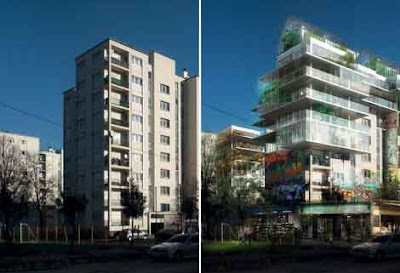
Monday, December 13, 2010
Wednesday, November 24, 2010
Sustainable Design




In 1997, The Kyoto Protocol established a global referendum on sustainability. The United Nations called a conference on the stabilization of greenhouse gasses by international businesses, mandated by countries. The United States signed the agreement but has not put it into action. China is the largest emitter of gases and excess overall, they claimed to making reforms but have increase emissions every year. The problem is not just the governments but the businesses who are supposed to be moderated by the governments. Many countries are starting to impose a Carbon tax upon businesses that refuse to reduce emissions.
When we think of sustainability today, it involves all aspects of life and consequently as aspects of the design process and production.
 The great “global responsibility”: Now it is no longer enough to be designer, you have to be a responsible global designer. Responsible global designers are first and foremost caring about the lasting influence design has on future generations. Some designs take from the earth and do not give back like de-forestation, fossil fuels, etc. Some designs are just one hit wonders, following trends, rather than understanding enduring human needs. Design businesses can also care for sustaining humanity, caring for employees and making use of people who need jobs in Africa and elsewhere.
The great “global responsibility”: Now it is no longer enough to be designer, you have to be a responsible global designer. Responsible global designers are first and foremost caring about the lasting influence design has on future generations. Some designs take from the earth and do not give back like de-forestation, fossil fuels, etc. Some designs are just one hit wonders, following trends, rather than understanding enduring human needs. Design businesses can also care for sustaining humanity, caring for employees and making use of people who need jobs in Africa and elsewhere. 

#1. Reduce
-Surfboards of recycled glass, and “green” friendly foam

Atelier Yanagi, 100% recycled green surfboards

Patagonia in Ventura, California takes its materials seriously and has increased sustainability in production. They also urge all employees to take it outside. The office is stocked with surfboards, climbing gear, bikes and even a yoga studio. Patagonia's flex time philosophy lets Patagonians escape from their desks to the sun and surf anytime of day -- as long as the work gets done, no one cares when you clock in or out. If you're wondering where the best breaks or swells are that day, simply call reception. It's their job to direct your call and tell you where you catch the best surf. This keeps employees active and reduces sick days which reduces costs.
One position on sustainability is that it starts with safety, though most people do not think of safety until it doesn't work.

The Factor of Safety is what designers consider in the creation process. Sometimes designers must use more elements than necessary to provide safety, such as materials with greater tensile strength or attachments like seat belts. Normally good design exceeds the minimum factor of safety and is stronger than the publicized limit. Read 14 Universal Design Tips in Safety.




 Champagne is a glocalism since the grapes thrive in the region of France but have a global consumption that requires Moet & Chandon to use glocal business strategies.
Champagne is a glocalism since the grapes thrive in the region of France but have a global consumption that requires Moet & Chandon to use glocal business strategies.The sustainability factor of localization is “the ability to combine the enhancement of a resource to the need of safeguarding it from overexploitation.” Two important examples of problems are diamonds and acai. Both products are connected to regions of proverty and the resources have been used to an extreme, creating strain on the communities in the case of diamonds causing wars and a black market and with acai creating food shortages.


The 2007 Red Campaign is one example of a somewhat failed communication design strategy. The intention was to involve a number of products in red versions that gave proceeds to Africa. Gap, Motorola and Apple invested $100 million in advertising and raised only $18 million for The Global Fund to fight Aids, Tuberculosis and Malaria.






Located near the Neckar River, Germany is the ‘Dupli Casa'. The private residence was designed by German architect Jurgen Mayer. Made from poured concrete the design sought to be low impact by re-using an existing location in the exact footprint of the previous house.

Wednesday, November 17, 2010
Environment Design



















































